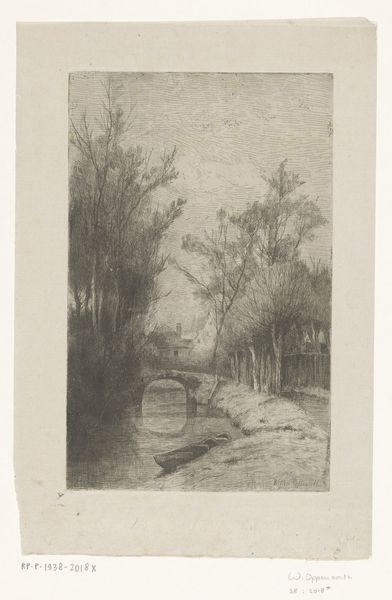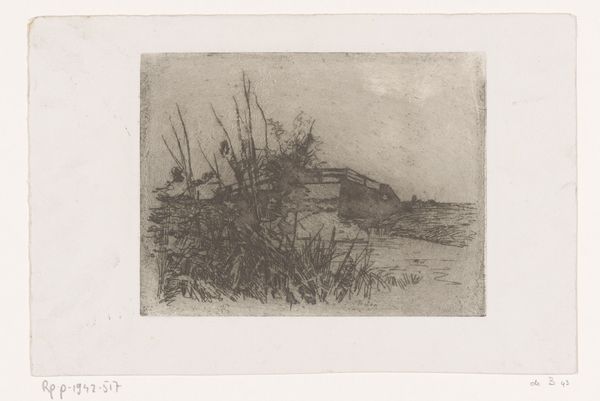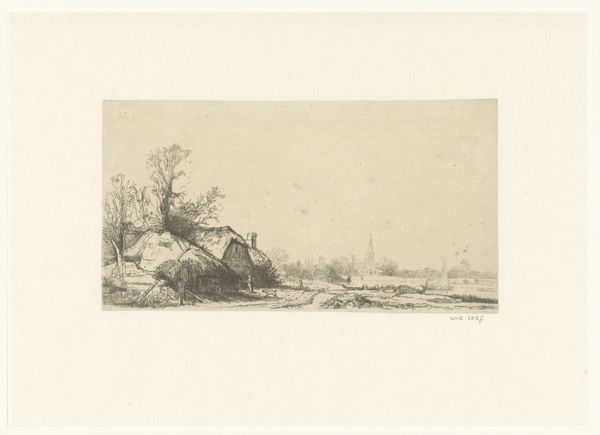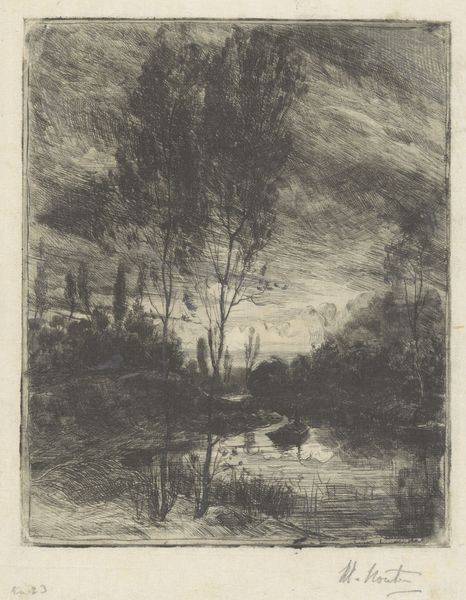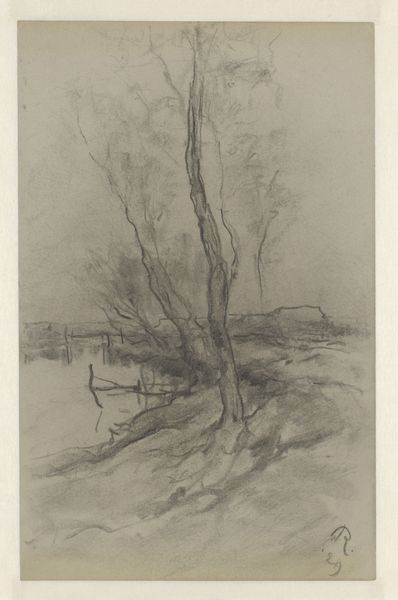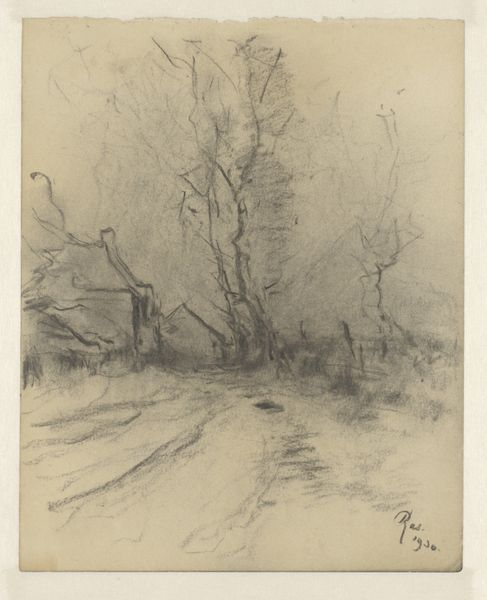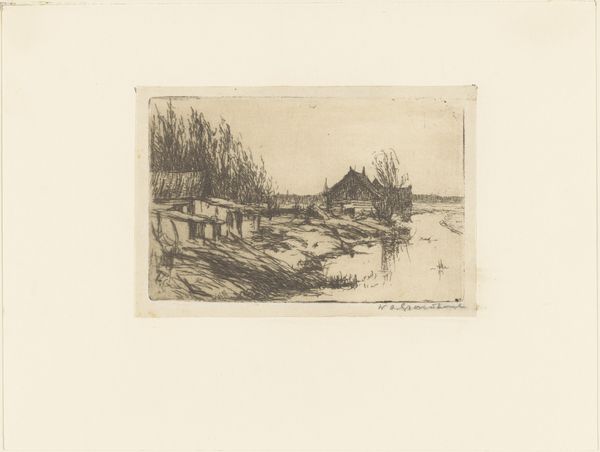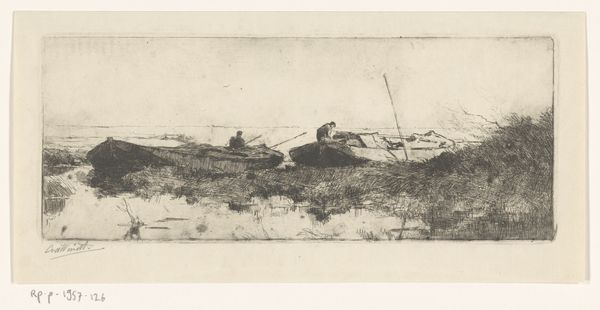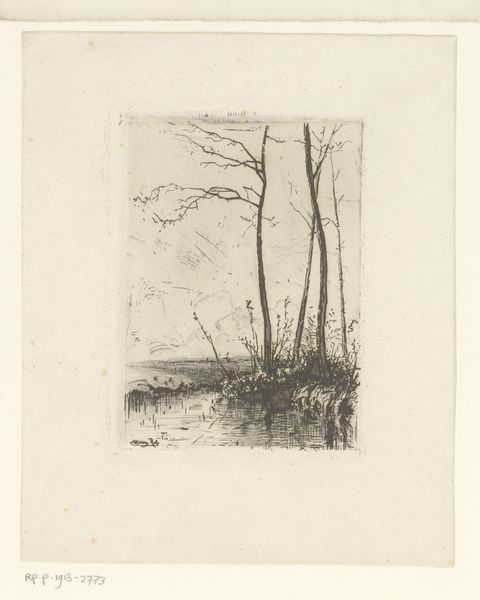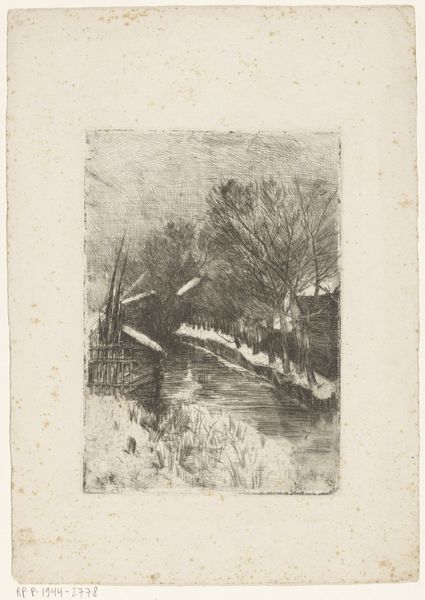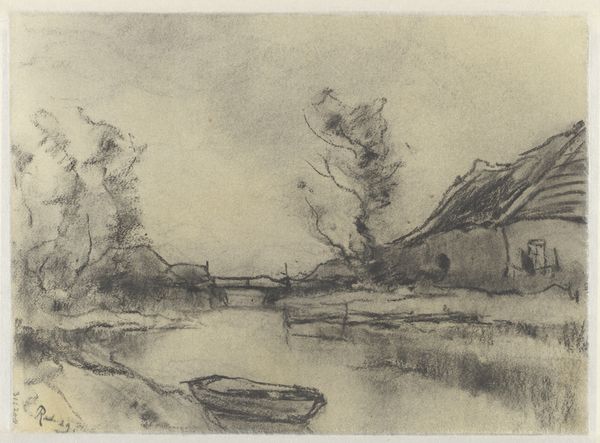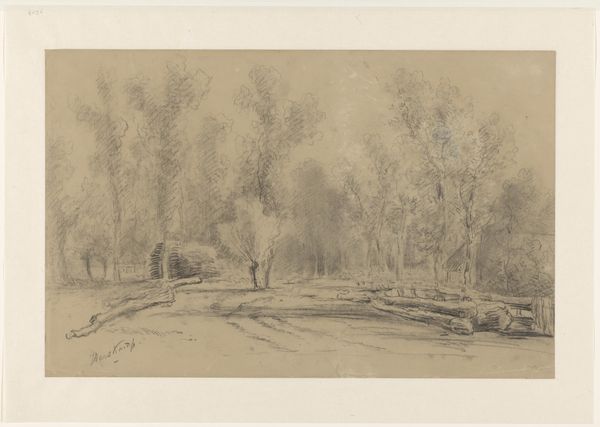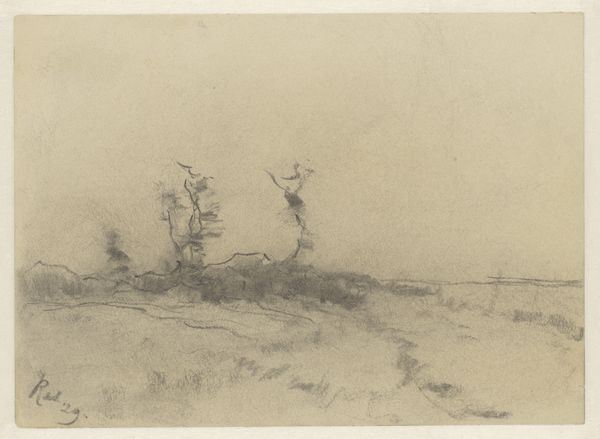
drawing, pencil
#
pencil drawn
#
drawing
#
pencil sketch
#
landscape
#
pencil
Dimensions: height 302 mm, width 230 mm
Copyright: Rijks Museum: Open Domain
Curator: Here we have a work by Pieter H.J.J. Ras, created in 1929. It’s entitled "Populieren, hut en vlonder," which translates to "Poplars, Hut and Deck." Ras rendered it using pencil on paper. Editor: Wow, that hits me right in the melancholia. It's like looking into a memory through a fog. Did he often capture scenes like this? Curator: Ras frequently depicted landscapes, yes. This piece provides insight into how artists working in the early 20th century engaged with nature, reflecting on the shifting socio-political landscape and humanity’s relationship to the environment. Editor: I feel it! It's more than just trees and a hut. There's this subtle feeling of…longing, maybe? It is simple and almost gestural in style, and yet creates a somber but compelling story for the viewer. Curator: Indeed, there’s an interplay between what is depicted and how it's rendered. Consider the use of the pencil itself, how Ras captures a sense of fleeting moments, a visual poetics relating to existentialist and ecological thought that grew stronger in that era. Editor: Ah, I get that. It feels fragile, this whole scene. The sketchiness, the way the lines almost dissolve into the background... Curator: That fragility, the transient nature of the landscape... the drawing style is so in line with that theme. Ras captures that atmosphere very nicely, right? He acknowledges a tension inherent in viewing nature: simultaneously being present with it while acknowledging our ephemeral positioning relative to it. Editor: Precisely. I initially interpreted a lack of crispness as technical uncertainty but, listening to you, I can understand it instead as him trying to evoke an important conceptual viewpoint. He understood our limited influence, then? Curator: Precisely, but consider the location in which this work resides. Within the prestigious Rijksmuseum, does it maintain such quiet subversion, or do such institutions neutralize radical commentary? It makes you wonder how we approach landscape drawings now, and how ideas of sustainability might intersect. Editor: Good point! Art always transforms when displayed! Overall, though, I am really drawn to the simplicity and honesty that comes from this sketch. Thank you! Curator: A pleasure. These subtle observations, the conversations they inspire, continue to keep these landscapes vivid today.
Comments
No comments
Be the first to comment and join the conversation on the ultimate creative platform.
